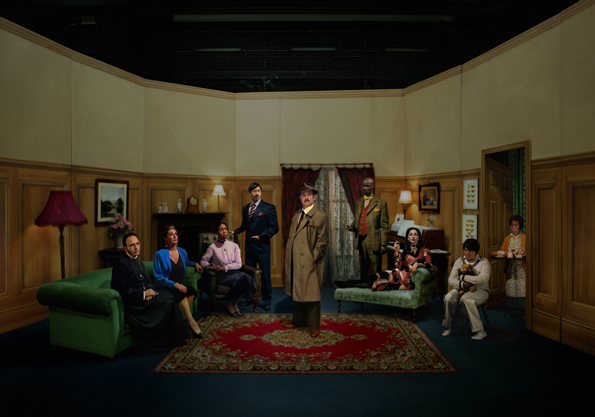 Filem-Filem-Filem
Filem-Filem-Filem
Instant colour photographs and digital videos
2008
Commissioned for the Singapore Fringe Festival 2008: Art & History, this new body of work is inspired by the artist’s search for old cinemas in Singapore and Malaysia.
Entitled Filem-Filem-Filem (‘Film’ in Malay) this series of photographs and videos was developed out of the artist’s research into the pioneering multi-cultural film industry in pre-independence Singapore.
Before cinemas existed in this part of the world, enterprising Chinese businessmen would drive from one town to the next, testing their market by setting up temporary cinemas in tents in open fields, public halls or Malay opera houses. If response was good, they would buy the hall or the plot of land and build a cinema. By the 60s there were hundreds of cinemas in all parts of Singapore and Malaysia.
Originally built as ‘dream palaces’ for the local masses, the cinemas were invariably grand and modernist, designed in styles that included Art Deco, Bauhaus and International Style, vernacularized for the Asian tropical climate.
Today, in the age of the ‘multiplex’, many of these stand-alone cinemas have either been demolished, or given a new lease of life as a church, supermarket, furniture store, department store, nightclub, restaurant, hotel, indoor swimming pool, ice-skating rink, snooker hall, ‘entertainment centre’, etc.
Some of them still maintain their original signages in the four official language scripts – English, Chinese, Tamil and Jawi – which is unique in the world.
The pictures of the cinemas in the exhibition are Polaroids taken with a manual medium format camera. They give the viewer a mixed sense of time and place: they have an intimacy and immediacy, as an ‘instant’ snapshot of a place, frozen in time forever – although in reality all of these pictures have been painstakingly stitched together digitally from several photographs.
The Polaroid was also developed around the same time as many of these cinemas, so the medium and subject are about the same age and both are becoming obsolete.
Seen collectively, the Polaroid cinemas could be read like human portraits, with stories untold of past glories, and facing uncertain futures, reveal their vulnerability.
At 7cm square, the scale of the old big screen cinemas have also gone through the miniaturization process, and the communal spirit of going to the movies has given way to individualism, in keeping up with the way we view the world today, via mini digital imaging devices such as mobile phone cameras, in our own imagined private spaces.
Along with the Polaroids are also 2 video works, one documenting the interiors of 2 abandoned cinemas ‘discovered’ by the artist, and another serving as a metaphorical record of the ‘pilgrimage’ the artist has taken, in retracing the journeys by the pioneering film entrepreneurs, derived from hand drawn 16mm film footage and digital video footage of a Singapore-Malaysia train journey.
Commissioned for the Singapore Fringe Festival 2008.
Exhibited at:
Life of Imitation – Singapore Pavilion, 53rd Venice Biennale, 2009
Vain Efforts – Gallery 4A, Sydney 2009
mononoaware – MK Galerie, Berlin & Rotterdam 2008/09
 LIFE OF IMITATION
LIFE OF IMITATION

 LIFE OF IMITATION
LIFE OF IMITATION
 In Love for the Mood
In Love for the Mood
 Angst Essen / Eat Fear
Angst Essen / Eat Fear
 Filem-Filem-Filem
Filem-Filem-Filem
 Lerne Deutsch mit Petra Von Kant /
Lerne Deutsch mit Petra Von Kant /
 Four Malay Stories
Four Malay Stories
 Whodunnit?
Whodunnit?